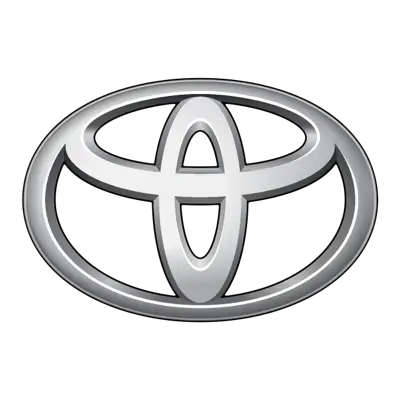![NA vs Turbo: Why they say there’s no replacement for displacement 01]()
Car manufacturers have been downsizing their engines for a while now. BMW started using 2.0-litre turbocharged 4-cylinder engines as opposed to their well-known naturally aspirated (NA) straight-six engines, Volkswagen began using 1.4-litre turbocharged engine to replace their NA 1.6 and 2.0-litre engines, you get the idea.
The reasoning behind this is simply to reduce emissions by producing more efficient cars and at the same time, provide the performance of a larger engine.
All sounds fine and dandy, or is it?
To paraphrase an engineer from Aston Martin—who worked on the Aston Martin DB11 with a 5.2-litre twin-turbocharged V12 engine—he said that to get the best efficiency from a turbocharged engine, it needs to be operating like an NA engine, which is at very low rpms and out of the turbo range.
![NA vs Turbo: Why they say there’s no replacement for displacement 01]()
You see, the efficiency gained comes from the downsized engine and the turbochargers are to compensate the loss of performance. It is ideal for lab testing where the engine spins at the lowest possible rpm and the turbo provides minimal boost, resulting in low consumption and emission figures.
On a side note, there is the subject of the more realistic WLTP cycle but we shall reserve that topic for now.
![NA vs Turbo: Why they say there’s no replacement for displacement 02]()
Out on the road, it is not easy to keep out of the turbo range, especially if the engine is drastically downsized. Say if you come across an uphill, it is very likely for the turbocharger to come on song and in return, fuel efficiency suffers.
This is why real-world driving fuel consumption figure often deviates from manufacturer’s claims. How far it deviates depends on the individual’s driving style.
![NA vs Turbo: Why they say there’s no replacement for displacement 03]()
Another advantage of downsized engines is lower weight. While that’s true, it may not always be the case. Take the 991 generation Porsche 911 for example, when the facelift was introduced, the 911 Carrera was fitted with a 3.0-litre turbocharged flat-six engine, downsized from the 3.8-litre NA engine.
![NA vs Turbo: Why they say there’s no replacement for displacement 04]()
And the weight of the car actually went up by about 40 kg. This is likely due to the plumbing system from the additional piping and intercoolers and whatnot.
So when I learned that the all-new 2021 Subaru BRZ gets a larger, NA engine that makes 231 PS/249 Nm, I was actually quite pleased.
Because for one, Toyota isn’t going to surpass the GR Supra’s performance with the 86 because remember that the GR Supra also comes with a 2.0-litre turbocharged engine, courtesy of BMW, which makes 258 PS/400 Nm.
![NA vs Turbo: Why they say there’s no replacement for displacement 05]()
And besides, adding a turbocharger also adds weight. Using a larger NA engine maintains its lag-free response and frantic high rpm performance. It’s also important to look past the peak output numbers and pay more attention to the power curve and delivery, because it makes huge difference in how the car feels and performs.
Which brings us on to NA engines. Turbocharged engines simply cannot match the immediacy NA engines provide. There is a certain rpm an engine has to spin to overcome the boost threshold before the turbo gets spooled. It is commonly mistaken for turbo lag.
Even if the engine is spinning above the boost threshold, it is almost impossible to completely eliminate turbo lag. From the moment the throttle opens up, the air has to flow through the combustion chamber and out as exhaust gas to spool the turbo, then it draws more air to which it has to be cooled by the intercooler before re-entering intake manifold.
In modern turbocharged engines, it happens quickly but to some, there is still a perceptible difference compared to NA engines.
Another major plus point for NA engines is the sound. Turbochargers are known to muffle exhaust notes. It’s just the way it works, you can’t mess with exhaust gases and expect it to sound the same.
And according to Ferrari, it doesn’t make sense for turbocharged engines to rev past 8,000 rpm or so because it becomes inefficient. So you can’t get a turbocharged engine that screams and howls to ridiculous rpms.
It may the reason why Porsche is sticking to NA engines for some of its GT models, including the upcoming Porsche 911 (992 generation) GT3 and 718 GT4. The driving engagement NA engines provide is second to none. Just have a listen to the soon-to-be announced 911 (992) GT3.
Mazda is also a big believer in NA engines and ‘right-sizing’. In an interview with Road and Track, Mazda engineers said, “We've determined that CVTs and downsized turbocharging are not the solutions we want,"
The Mazda engineer added that prevailing small displacement turbo engine is simply “trying to get great fuel economy and engine efficiency in one very small operating point.” It helps these engines achieve great fuel consumption figures in testing, but not in the real world.
The move to turbocharge their largest yet engine, the 2.5-litre unit, is to mimic the low-end torque of even larger capacity engines. Its main purpose was not for efficiency gains.
![NA vs Turbo: Why they say there’s no replacement for displacement 06]()
Former head of powertrain at Renault, Alain Raposo, told Reuters that they have reached the limits of downsizing. “The techniques we’ve used to reduce engine capacities will no longer allow us to meet emissions standards,” he added.
While Volkswagen were tight-lipped about this, they did replace the 1.4-litre TSI engine with a slightly larger, 1.5-litre TSI engine codenamed EA211 Evo.
![NA vs Turbo: Why they say there’s no replacement for displacement 07]()
Now, the point of this exercise isn’t to diminish the role of turbochargers. They do have their advantages, it’s an effective way to increase power and torque of smaller capacity engines.
But there are compromises to turbocharging such as the delayed response and sound, areas which NA engines still hold the upper hand. There is, too, the topic of maintenance, roadtax and long-term durability but we shall reserve that for another day.
On a final note, the hybrid approach in which an electric motor supplements the combustion engine is no longer seen as merely a way to reduce fuel consumption, electrification can offer significant boost in performance.
And as we know, electric motors provide instantaneous torque at any given speed. So who’s to say manufacturers won’t ditch turbochargers in favour of electric motors?















